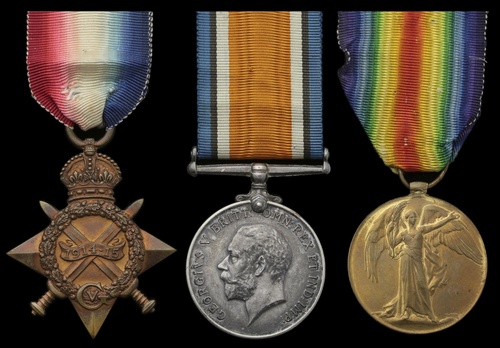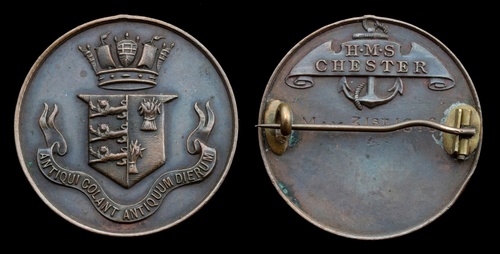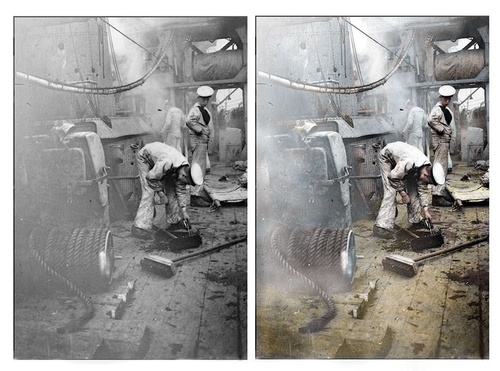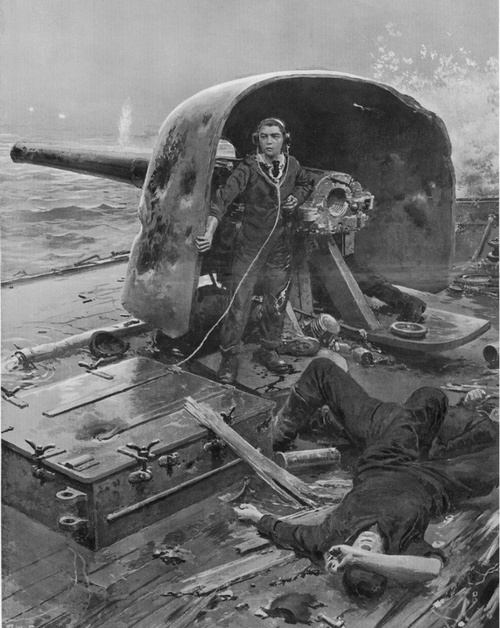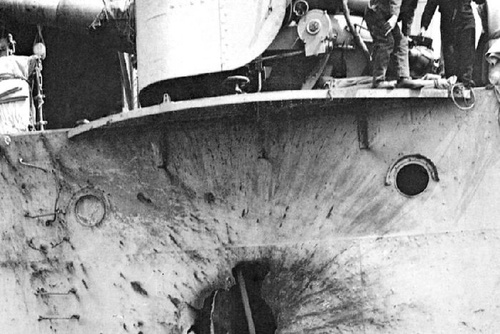Auction: 22003 - Orders, Decorations and Medals
Lot: 362
31 MAY - 1 JUNE 1916: JUTLAND
'The first shot put out all the lights and we were in total darkness. After a lull in the fighting we were let out to the upper deck and what a sight - which will remain in my memory forever. An officer was lying dead with both legs severed in sea boots. I stepped over a body that had been disembowelled. I had to hold a seaman's foot while the Doctor cut it off as it was just hanging. We laid the bodies side by side and were told to turn them over on their stomachs …'
Officer's Steward 1st Class Reginald Gulliver recalls horrific scenes aboard H.M.S. Chester; see Jutland 1916 - Death in Grey Waters, by Nigel Steel and Peter Hart.
A Great War campaign and tribute medal group of four awarded Electrical Artificer 3rd Class W. H. Carter, Royal Navy, who was fortunate to emerge unscathed from H.M.S. Chester's ordeal at the battle of Jutland
Such was the extent of the shocking fire inflicted on the newly launched light cruiser that one of her signalmen recalled seeing a man's hair stand on end - 'a thing I never thought possible'
In total Chester took 17 direct hits, had three guns put out of action and suffered casualties of 29 killed and 49 wounded: among the mortally wounded was 16-year-old Jack Cornwell, who received a much-publicised posthumous award of the V.C.
1914-15 Star (M. 5818 W. H. Carter, E.A. 4., R.N.); British War and Victory Medals (M. 5818 W. H. Carter, E.A. 3. R.N.); City of Chester, Jutland Tribute Medal, bronze, obverse, embossed City Arms and motto, reverse, embossed anchor and 'H.M.S. Chester' above engraved date, 'May 31st 1916', with brooch fitting to reverse, very fine or better (4)
William Henry Carter was born in Poplar, London on 11 September 1891 and entered the Royal Navy as an Acting Electrical Artificer 4th Class in February 1913.
By the outbreak of hostilities in the following year, he was serving aboard the cruiser H.M.S. Natal and he was likewise employed at the time of her loss at Cromarty Firth in December 1915. Controversy still surrounds the cause of an internal explosion that ripped the ship apart with a loss of 390 crew and civilians; Carter's survival must be attributable to him having been ashore on leave.
In April 1916, he removed to the light cruiser Chester and it was in this capacity that he was present at Jutland, when Chester formed part of the 3rd Battle Cruiser Squadron and ran into the German 2nd Scouting Group. The bare facts emerging from that hotly contested encounter are cited above, to which may be added Captain Lawson's observation that Chester's decks were 'littered with mutilated men'.
Carter came ashore to Pembroke II in October 1916. Having then returned to sea in the cruisers Bacchante (February-November 1917) and Undaunted (from January 1918), he was invalided ashore in January 1920.
Today, tangible evidence of Chester's gallant part in the battle of Jutland survives in national collections, including the 5.5-inch gun manned by Jack Cornwell, V.C. at the Imperial War Museum and one of her battle ensigns at the National Maritime Museum.
Subject to 20% VAT on Buyer’s Premium. For more information please view Terms and Conditions for Buyers.
Sold for
£350
Starting price
£350

